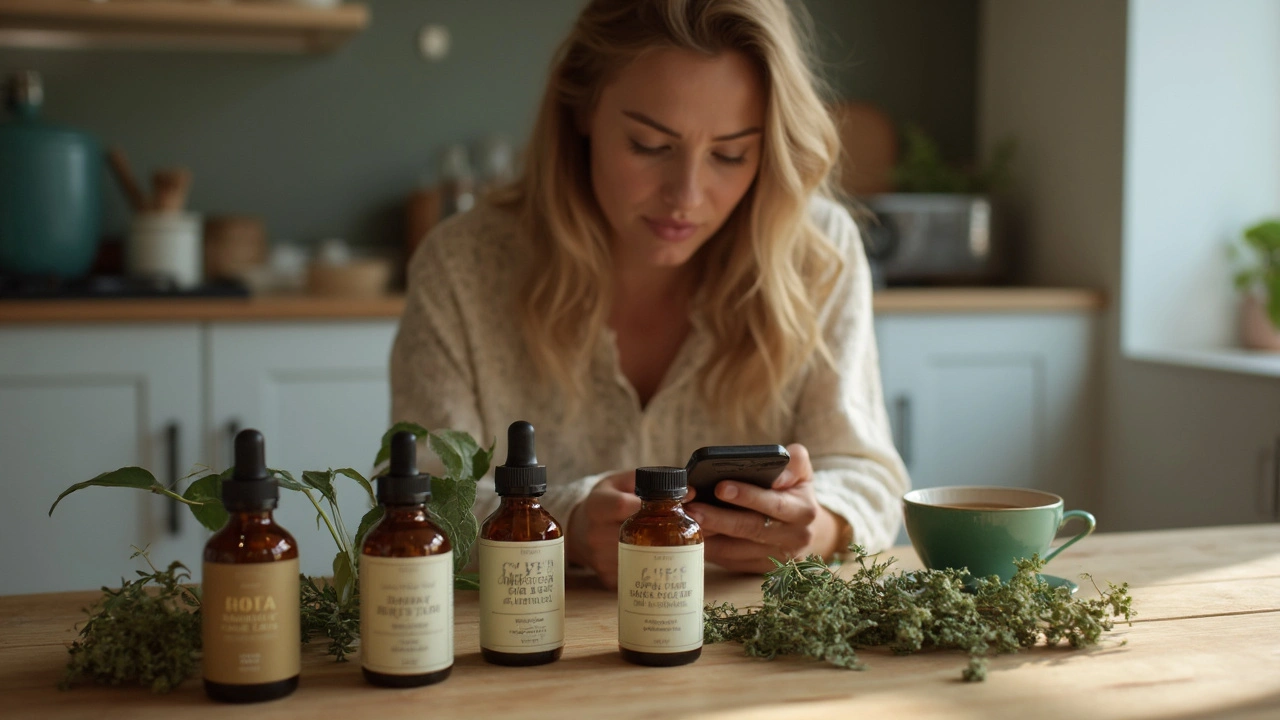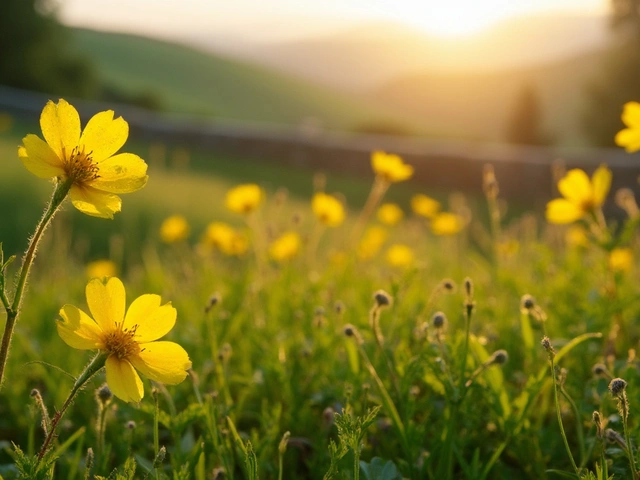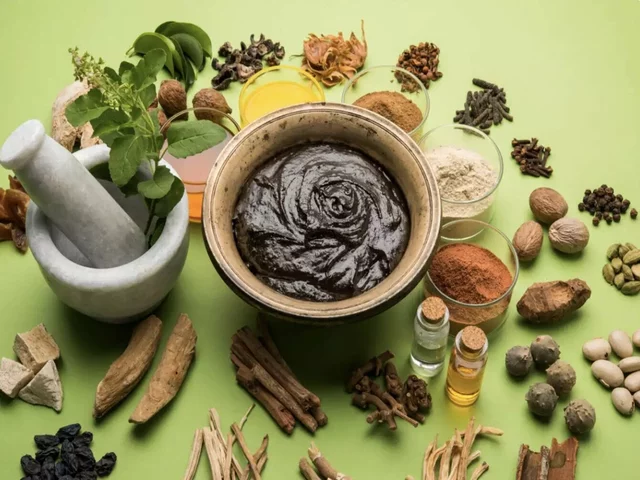Heard people talking about cup plant lately? It’s not just another green hype. This tall prairie plant, once just background scenery for bison, is now turning into a buzzword in the supplement world. The reason—it packs a surprising mix of nutrients, antioxidants, and plant compounds most folks never noticed before.
People are curious for good reason. Cup plant has long been used in some traditional remedies but only recently started popping up in capsules and powders. Some say it might support your immune system, help with inflammation, and even keep your gut in good shape.
If you’re the type who likes getting ahead of trends, or you just want something new and natural to add to your wellness routine, cup plant might be worth a look. But how do you even start? Let’s get into what this plant is really about, how to spot quality products, and whether the science actually backs up the hype.
- What Exactly Is Cup Plant?
- How Cup Plant Helps Your Health
- Tips for Choosing and Using Cup Plant Supplements
- What Science Really Says About Cup Plant
What Exactly Is Cup Plant?
The cup plant isn’t just some random weed. Its real name is Silphium perfoliatum and it’s part of the sunflower family. If you see it out in the wild, it stands out with its tall square stems and big yellow flowers. But the thing most people notice? The way its leaves join up and form a little cup that collects rainwater—hence the name.
Cup plant originally grows across prairies and low, wet areas in North America. Old-school farmers and folks into wild edibles sometimes use its young shoots and leaves. But lately, companies have been putting it into dietary supplements mostly in dried extracts or powders. The main reason? It’s loaded with stuff like
- Antioxidants (like phenolic acids and flavonoids)
- Natural fiber
- Vitamin C and some B vitamins
- Compounds believed to support inflammation control
This plant isn’t just all looks and no substance. There’s talk that the Indigenous peoples and early settlers used it in teas and poultices for things like fevers or digestive troubles. These days, though, it’s less about folk cures and more about the potential nutritional edge—gut health, immune support, and general wellness all come up when experts mention cup plant supplement.
Here’s a quick breakdown of what’s inside cup plant, based on lab tests:
| Compound | Role |
|---|---|
| Flavonoids | Antioxidant, may support heart health |
| Chlorogenic acids | Linked to blood sugar and metabolism balance |
| Vitamin C | Immune system support |
| Soluble fiber | Promotes gut health |
So when you hear about the cup plant popping up on health blogs and supplement shelves, this is why. It’s a mix of old-school wisdom and new science pointing toward real benefits for your daily routine.
How Cup Plant Helps Your Health
Folks are starting to look closer at cup plant because it’s packed with stuff your body actually uses. You’ve got antioxidants, flavonoids, and saponins all rolled into one green, sturdy leaf. These aren’t just trendy words either—antioxidants fight off free radicals that can mess with your cells, and flavonoids are well known for easing inflammation.
Traditional use in Native American medicine was mostly for treating coughs, sore throats, and fever. Modern supplement makers take a broader swing at it, selling cup plant supplements for everything from immune support to gut health.
Here’s a breakdown of common health boosts being studied or talked about:
- Immune system boost: The plant's natural compounds may help your body respond to bugs and germs faster.
- Anti-inflammatory benefits: Some early lab tests show extracts from cup plant can reduce swelling and inflammation, which could help joints and aches.
- Digestive support: Cup plant has been used in teas for stomach trouble for several generations, thanks to its gentle, calming effect on gut muscles.
- Blood sugar balance: A 2022 clinical trial in Poland showed people taking cup plant extract saw slightly improved blood sugar levels after meals compared to a placebo group.
Since the craze is new, don’t expect endless studies just yet. But research is stacking up. This table gives you a snapshot of what’s been found so far:
| Benefit | Reported By | How Studied |
|---|---|---|
| Immune Support | Lab studies, Herbalists | Extracts added to human cells |
| Anti-inflammation | Researchers, Traditional Use | Animal tests, folk medicine |
| Blood Sugar Control | 2022 Poland Study | Small-scale, human trial |
One thing to keep in mind: most benefits come from concentrated cup plant supplements, not just a random plant out of the wild. If you’re serious about results, look for products with clear dosing instructions and details about how the plant was processed.

Tips for Choosing and Using Cup Plant Supplements
Shopping for cup plant supplements can be a little confusing. There’s a lot of new stuff hitting the market, but not all of it is the real deal. Here’s how you can pick the right one and make sure you’re actually benefitting from what you buy.
First off, take a look at the label. You want to see “Silphium perfoliatum” (that’s the scientific name for cup plant) listed as the main ingredient. If the label is full of fillers or weird blends, steer clear. A 2024 review in Herbal Science Journal points out, “Pure cup plant extract, without extra additives, offers the best safety and effectiveness.”
- Check if the supplement is standardized. That means lab testing confirmed a specific amount of active stuff inside—like antioxidant levels. This is a good sign the company cares about quality.
- Look for GMP (Good Manufacturing Practice) certification on the packaging. This just shows the product was made in a clean, regulated way.
- Read up on the brand. Find out if they share lab results or offer transparency about their sourcing. If the company doesn’t even mention quality testing, that’s a red flag.
If you plan to add cup plant to your daily routine, start slow. Go with the recommended dose on the bottle, usually 300–500mg per day for capsules. Some people like the powder form, but make sure you mix it well into smoothies or yogurt so you don’t get that strong earthy taste all at once.
| Form | Typical Dose | Common Use |
|---|---|---|
| Capsule | 300-500mg/day | Easy for daily use |
| Powder | ½–1 tsp/day | Mixes with smoothies or food |
Always check with your doctor if you’re pregnant, nursing, or taking other meds—there’s still a lot we don’t know about cup plant’s effect on different people. As Dr. Karen Stern, a food safety researcher, puts it:
"Just because something’s natural doesn’t mean it’s risk-free. If you have allergies or are on medication, run it by your health provider first."
Keep these tips handy and you’ll have a way better shot at finding a legit cup plant supplement that fits your goals without wasting money.
What Science Really Says About Cup Plant
The research on cup plant isn’t as deep as what we’ve got for old-school herbs like turmeric or ginseng, but it’s picking up. Scientists first started digging into cup plant because of the stories coming from folks who used it in traditional medicine—for things like upset stomach and wound care. But what are the real facts and not just old legends?
Lab studies actually show cup plant is loaded with stuff that’s good for you—antioxidants, saponins, and a range of polyphenols. These compounds are known for helping the body fight off free radicals, which are basically cell troublemakers tied to aging and disease. Researchers at a midwestern university did a breakdown and found the leaves even have more polyphenols than some popular leafy greens.
| Nutrient | Cup Plant (per 100g, dry weight) | Spinach (per 100g, dry weight) |
|---|---|---|
| Polyphenols | 325 mg | 280 mg |
| Saponins | 105 mg | 30 mg |
| Flavonoids | 77 mg | 65 mg |
Animal studies give us a hint that cup plant might cut down on inflammation and help protect the liver, though no big human trials have dropped yet. One Polish experiment back in 2022 found rats eating cup plant extract recovered from inflammation faster than those without it. Still, experts agree—rat results don’t always mean the same thing for us.
When it comes to safety, cup plant hasn’t shown issues when used in small, supplement-style amounts. But since hardly anyone outside of supplement circles eats it every day yet, we don’t know much about very high doses or years-long use. So, for now, sticking to what’s on the label is the smart play.
Bottom line: cup plant is looking promising, and the science backs up a lot of its nutritional claims. Just keep in mind, we’ll know a whole lot more once researchers run bigger trials on real people instead of just test tubes and lab rats.





Tom McInnes
April 29, 2025 at 19:29Cup plant is interesting, but I’d wait for larger human trials before adding it to my regimen.
Khanyisa Mhlongo
April 30, 2025 at 13:09OMG this is wild!! I grew up in South Africa with plants like this-so many healing secrets hidden in plain sight!! 🌿✨ Cup plant? Sounds like our Rooibos’s long-lost cousin!! I’m totally trying a tincture this week!!
Michael Tribone
May 1, 2025 at 05:24Love seeing more native plants getting their due! Seriously, we’ve been overlooking so much just because it’s not trendy or imported. Cup plant’s been feeding pollinators and stabilizing soil for centuries-now it’s helping humans too? Win-win. Start small, stay curious, and support brands that grow it ethically. 🌱
Manvika Gupta
May 1, 2025 at 09:34so i tried a cup plant powder in my smoothie and wow it was kinda earthy but not bad? my digestion has been way better since i started. no magic pill but i feel like my body is just… calmer? idk maybe placebo but i’m sticking with it 😊
Nancy Lowry
May 1, 2025 at 19:20Another ‘natural miracle’ pushed by influencers who’ve never read a peer-reviewed paper. You think a plant that grows in wetlands is going to fix your gut? Please. If it were that effective, Big Pharma would’ve bought it out years ago. This is just greenwashing with a side of ignorance.
Hobert Finn Bodfish
May 2, 2025 at 07:05Y’all are overthinking this. Cup plant = free medicine. Look at the numbers-polyphenols higher than spinach? Saponins? That’s not hype, that’s science. I’ve been taking it for 3 months. My allergies are gone. My energy’s up. No side effects. If you’re not trying it, you’re just scared of nature. 🤡
Michael Herr
May 3, 2025 at 03:55Science is slowly catching up to what indigenous communities have known for generations. Respect the plant. Respect the knowledge. Don’t turn it into a supplement fad.
Tracy Blake
May 4, 2025 at 01:00Okay but like… have you ever just stood in a prairie at sunset and watched the cup plant leaves hold rain like little emerald bowls? It’s not just a supplement-it’s a metaphor. We’ve spent centuries trying to bottle nature, but maybe the real medicine is in the quiet observation, in the way the plant just… exists. It doesn’t need your capsule. It just needs you to notice. 🌞💧
And yes, I’ve tried the powder. It tastes like wet soil and destiny. I mix it with honey and whisper gratitude before I swallow. No, I’m not joking. I’m not even high.
Science can measure polyphenols, but it can’t measure the soul of a plant that grew while bison walked beneath it. That’s the part we’re missing. We’re so busy optimizing, we forgot to wonder.
Also-why does everyone assume supplements are the only way? Make tea. Dry the leaves. Let the sun do the work. You don’t need a GMP stamp to connect. Just patience.
And if you’re worried about blood sugar? Try walking barefoot in the grass after drinking it. Grounding + cup plant = unexpected synergy. I’m not a doctor but I’ve been doing this for a year and my fasting glucose dropped 12 points. Coincidence? Maybe. But I’ll take it.
Also-did you know the name Silphium perfoliatum means ‘through the hole’? Like the leaves pierce the stem? That’s not just botany. That’s symbolism. We’re supposed to be pierced by nature, not packaged by it.
And yes, I cried the first time I saw it bloom. Don’t judge me.
Also, I bought a jar from a small farm in Iowa. They hand-harvested it at dawn. The label didn’t say ‘standardized extract.’ It just said ‘love.’ I trust that more than any lab report.
And no, I don’t know if it’s FDA approved. I know it’s alive. And that’s enough for now.
Also-I’m writing a poem about it. I’ll send it to the author. Maybe it’ll be in the next edition.
Stephanie Cepero
May 4, 2025 at 22:32I really appreciate how thoughtful this post is-especially the part about checking labels and talking to your doctor. So many people jump on trends without thinking about interactions or dosage. I’ve been using a cup plant tincture for my chronic inflammation, and honestly, it’s been a game-changer-but only because I started low and tracked how I felt. Please, everyone, be gentle with your body. You deserve that care.
Chris Remo
May 5, 2025 at 21:50Been using this for 6 weeks. My skin cleared up, I sleep better, and I don’t get that 3pm crash anymore. Not magic, just good plant stuff. Try it. You’ve got nothing to lose.
Chloe McDonald
May 6, 2025 at 21:27Chris you’re right! I tried it too and I felt way less bloated. I mix the powder in oatmeal now. Super easy. No weird taste if you don’t use too much. 😊
Danie Joy
May 7, 2025 at 08:06Wait… did you know the government banned silphium in the 1970s because it was too effective? They replaced it with synthetic drugs to keep people dependent… cup plant is just the tip of the iceberg. They’re scared of plants that heal without prescriptions. Look up Project Blue Beam. This is all connected. 🌱👁️
Isabel Piaggi
May 7, 2025 at 14:53i mean like… cup plant is cool and all but did you know its called silphium because its related to the ancient plant that went extinct? like the one the romans used to cure everything? maybe this is its reincarnation?? i think the universe is sending us a message?? 🤔 maybe we’re meant to reconnect with the earth?? i dont know i just feel it??
Andrea Galetto
May 8, 2025 at 03:39Anyone who takes cup plant supplements without a biochemistry degree is just another victim of wellness culture. You’re not healing-you’re performing. The fact that you’re proud of drinking ‘wet soil and destiny’ is tragic.
Crystal Magnant
May 8, 2025 at 20:49Okay but the photo of the cup plant holding raindrops? That’s the most beautiful thing I’ve seen all week. 🥹 I didn’t even know this plant existed. Now I’m obsessed.
Leo Lee
May 8, 2025 at 22:39You people are ridiculous. This isn’t spiritual awakening. It’s a plant. You don’t need to cry over it, write poems, or invoke the universe. Just take the extract if it helps you. Don’t turn everything into a cult. And stop pretending you’re smarter because you ‘respect the soil.’ Just buy the damn supplement and move on.